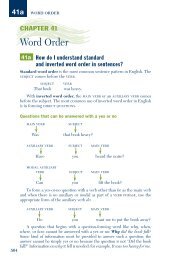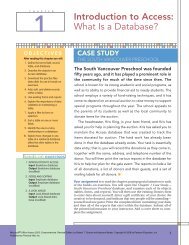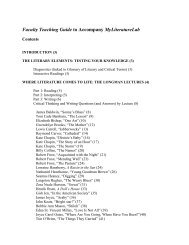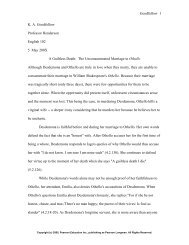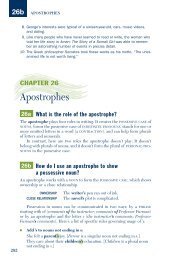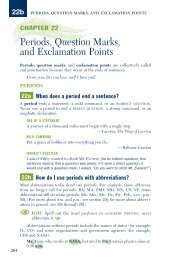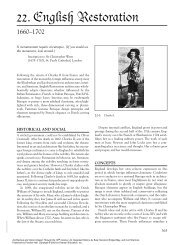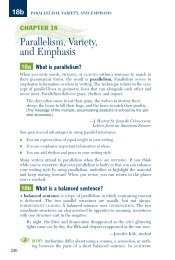JavaScript/JScript: Control Structures I - Pearson Learning Solutions
JavaScript/JScript: Control Structures I - Pearson Learning Solutions
JavaScript/JScript: Control Structures I - Pearson Learning Solutions
You also want an ePaper? Increase the reach of your titles
YUMPU automatically turns print PDFs into web optimized ePapers that Google loves.
2008934301<br />
Chapter 14 <strong>JavaScript</strong>/<strong>JScript</strong>: <strong>Control</strong> <strong>Structures</strong> I 407<br />
Most <strong>JavaScript</strong> programmers prefer to write the preceding if structure as<br />
if ( grade >= 90 )<br />
document.writeln( "A" );<br />
else if ( grade >= 80 )<br />
document.writeln( "B" );<br />
else if ( grade >= 70 )<br />
document.writeln( "C" );<br />
else if ( grade >= 60 )<br />
document.writeln( "D" );<br />
else<br />
document.writeln( "F" );<br />
The two forms are equivalent. The latter form is popular because it avoids the deep indentation<br />
of the code to the right. Such deep indentation often leaves little room on a line, forcing<br />
lines to be split and decreasing program readability.<br />
It is important to note that the <strong>JavaScript</strong> interpreter always associates an else with<br />
the previous if, unless told to do otherwise by the placement of braces ({}). This is<br />
referred to as the dangling-else problem. For example,<br />
if ( x > 5 )<br />
if ( y > 5 )<br />
document.writeln( "x and y are > 5" );<br />
else<br />
document.writeln( "x is 5" is<br />
output. Otherwise, it appears that if x is not greater than 5, the else part of the if/else<br />
structure outputs the string "x is 5" );<br />
else<br />
document.writeln( "x is 5"—is displayed.<br />
However, if the second condition is false, the string "x is 5" );<br />
}<br />
else<br />
document.writeln( "x is




